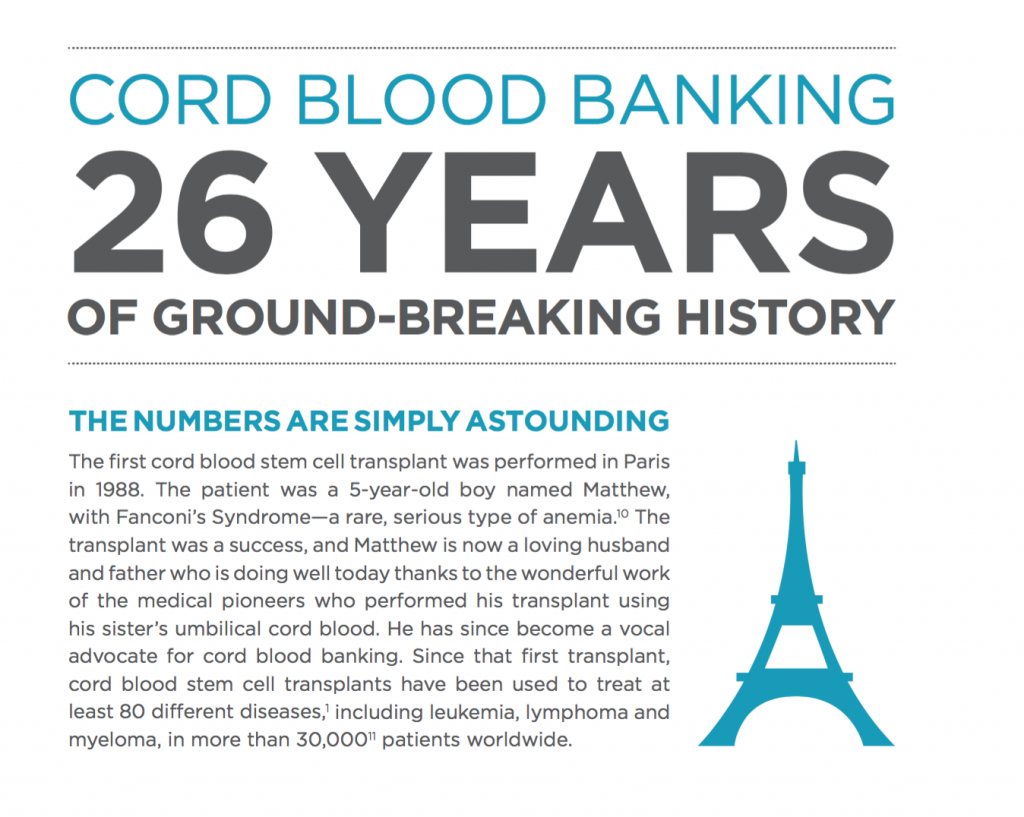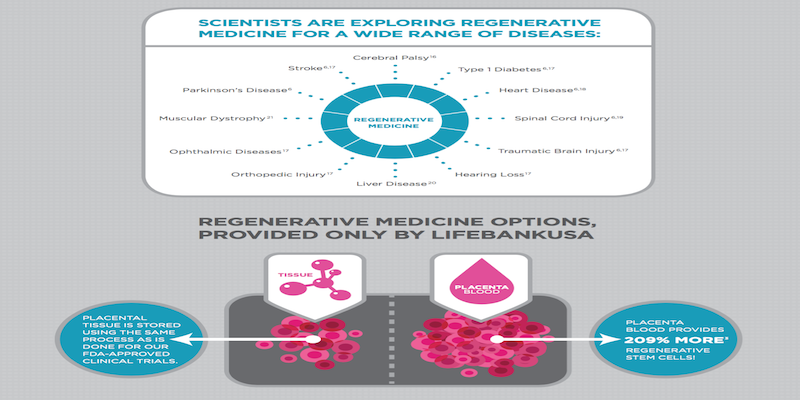This is a sponsored post. All opinions expressed are my own.
Quentin’s story is phenomenal! He was the first placenta-cord blood transplant recipient and his transplant saved his life. No child’s parents are willing to watch their kid suffer. Banking placenta and cord blood gives families more reassurance and more options if something were to go wrong and stem cells were a viable option to save the child’s life. When considering cord blood banking, it is important to find the right cord blood bank that will offer you the best options for your money and a company that you and your child’s doctor will be able to trust.
During my first year of blogging I shared my own story of banking my daughter’s cord blood and how we eventually chose to donate it for research after we learned she has Sickle Cell Anemia. We made the decision when we realized that her cord blood probably would not be as useful to her as we would have liked.
Currently, statistics state that a child will have a 1 in 400 chance of ever using his or her cord blood, but what if that 1 time would make a world of difference, just like in Quentin’s case. I know as a parent, I would want to have healthy cord blood on hand if I ever needed it. Over time, scientists are learning more, conducting more experiments and doing research that is changing lives on a daily basis.
If you’re on the fence about cord blood banking here are 5 Facts About Cord Blood You Should Know:
1. Your Money Pays For More Than Storage
One of the largest reservations I had when it came to cord blood banking was the cost. Why is it so expensive? Am I paying all this for nothing? When you agree to bank your child’s cord blood the money goes towards the cost of collection, testing the sample sent in, processing the sample, storing your child’s cord blood, operating the facility where the sample is kept, and helping the facility stay on top of all the legal checks and balances that must be in place.
Typically banking your child’s cord blood can cost thousands of dollars. If you are pregnant or plan to be you can start putting away money now to cover the cost.
2. You Have Options
Expecting moms need to decide while their child is still in utero, which blood they want to bank? For instance, advanced bio banking is now available which gives parents the 3 banking opportunities:
- Cord blood
- Placenta blood
- or tissue banking
Currently, Lifeb ankUSA is the only company where people can bank both placenta blood and cord blood. Cord blood banking samples can be small, but by providing the option to also bank placenta blood and tissues, the usefulness of the sample increases tremendously. According to LifebankUSA
ankUSA is the only company where people can bank both placenta blood and cord blood. Cord blood banking samples can be small, but by providing the option to also bank placenta blood and tissues, the usefulness of the sample increases tremendously. According to LifebankUSA
Customers who bank placenta blood in addition to cord blood with LifebankUSA preserve 60-70% more CD34+ stem cells—the cells that medical journals have reported as the most important for rebuilding diseased blood with healthy blood. Placenta blood also increases other types of progenitor stem cells (e.g. CD105+), which are expected to play a key role in the development of regenerative medicine. (Source)
3. Stem Cells Save Lives
A couple of weeks ago there was an article circulating on Facebook about adult patients being cured from Sickle Cell Anemia after receiving a stem cell transplant from a relative without undergoing chemotherapy. Thankfully, the advances in science is truly helping sickle cell and cancer patients in a remarkable way.
According to an article published on the National Institute of Health’s website in 2014:
Thirty patients, ages 16 to 65, with severe sickle cell disease enrolled in the study between 2004 and 2013. The patients first underwent a less toxic regimen to kill off some of their marrow cells. They then underwent a stem cell transplant, receiving cells donated by a healthy brother or sister.
The team found that the stem cell transplant reversed the disease in 26 of 30 patients (87%). (Source)
4. Stem Cells Are Used to Treat Real Disease In Real Patients
To date, LifebankUSA Has Released Stem Cells To Treat:
• Congenital Hypomegakaryocytic Thrombocytopenia
• Hemophagocytic Lymphohistiocytosis (Hlh)*
• Histiocytosis*
• Hurler’s Syndrome
• Inherited Bone Marrow Failure Syndrome
• Acute Lymphoblastic Leukemia (All)
• Acute Myelogenous Leukemia (Aml)
• Adrenoleukodystrophy (Ald)
• Aplastic Anemia
• Beta Thalassemia
• Cerebral Palsy*
• Chédiak-Higashi Syndrome
• Chronic Lymphocytic Leukemia (Cll)
• Langerhans Cell Histiocytosis*
• Myelodysplastic Syndrome
• Multiple Myeloma
• Non-Hodgkin Lymphoma
• Severe Combined Immunodeficiency (Scid)
• Sickle Cell Anemia
• Wiskott-Aldrich Syndrome
• In Utero Stroke
**These are diseases for which stem cell treatments have been shown to be potentially beneficial, but additional studies are required before they can be used as standard therapy. These investigational uses are not consistent with current labeling. Stem cells from placenta and cord blood are indicated to rebuild blood. (Source)
5. The Process Is Not Painful
Cord blood banking isn’t painful or an extra step for an expecting mom. In addition, it doesn’t hurt your newborn baby. When I gave my OB the cord blood banking kit, I didn’t feel anything extra or out of the norm. Typically, the expecting mom informs her OBGYN. Then she brings the cord blood banking kit to the hospital for labor and delivery, and during the delivery the OBGYN adds the sample(s) needed to the kit, and then a loved one gives the boxed and sealed kit to the delivery courier. That’s it. explain this better
It’s also reassuring to know that their has been over 26 years of stem cell transplants in more than 30,000 patients across the world. Cord blood banking might sound new, but it has been a part of science and treatment for many decades and will continue to save lives and provide more patients with life-saving treatment options. If you are seriously interested in learning more about cord blood banking, call and speak to a representative who can answer your questions specifically.
If you are seriously interested in learning more about cord blood banking, call and speak to a representative who can answer your questions specifically.
- Twitter – @LifebankU
- Facebook – LifebankUSA
*images courtesy of LifebankUSA
This is a sponsored post. All opinions expressed are my own.



